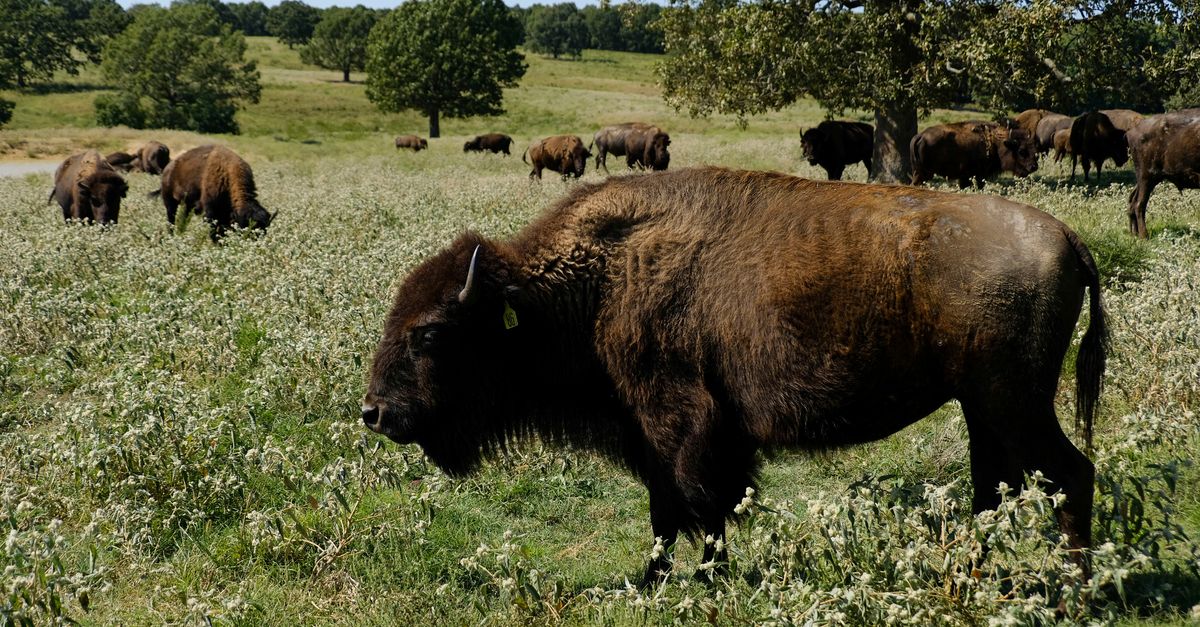A bipartisan bill proposed on Friday aims to establish a permanent program within the Interior Department that would support tribal governments’ ongoing efforts to reintroduce wild bison herds. This bill, presented by Sens. Martin Heinrich (D-N.M.) and Markwayne Mullin (R-Oka.), represents a significant step forward in addressing one of America’s most significant failures in wildlife conservation.
The proposed program would allocate $14 million annually to facilitate the transportation of wild buffalo from federal public land to tribal reservations. Additionally, it would provide grants and technical assistance to aid tribal initiatives in expanding buffalo habitats.
Sen. Martin Heinrich expressed his support for the bill, stating, “The bison has been a critical part of our culture for many generations, in New Mexico, across the West, and especially in Indian Country. The growth of Tribal buffalo herds over the last few decades is both a symbol of the enduring resilience of this iconic species and a major economic development opportunity … I hope that within my lifetime—thanks to a broad coalition—we will see bison return to the prominent place they once occupied as the keystone species on American shortgrass prairies.”
The Inter-Tribal Buffalo Council, a coalition of 82 nations dedicated to restoring wild bison to tribal lands, has applauded the bill. According to ITBC President Ervin Carlson, “It is simply impossible to overstate both the importance of the buffalo to the Indian people and the damage that was done when the buffalo were nearly wiped out. By helping tribes reestablish buffalo herds on our reservation lands, the Congress will help us reconnect with a keystone of our historic culture as well as create jobs and an important source of protein that our people truly need.”
This marks the third time that this bill will be presented to Congress. Former Rep. Don Young (R-Alaska) initially proposed a version of the law in 2019.

Audrey Jackson/Associated Press
In recent decades, tribal governments have increasingly worked to reintroduce wild herds to reservation lands, often collaborating with Yellowstone National Park to transport animals that would otherwise be culled by federal officials. This movement to bring buffalo back to tribal land combines aspects of social justice, cultural restoration, and wildlife conservation, particularly for tribes with a historical connection to wild buffalo.
One notable instance of this movement occurred in July when the Blackfeet Nation released wild bison onto their tribal land, anticipating that the buffalo would migrate towards Glacier National Park. This effort is considered one of the most extensive buffalo restoration initiatives in recent decades.
However, the reintroduction of buffalo to tribal land faces significant challenges. The Yellowstone buffalo population has a high prevalence of brucellosis, a bacterial disease that causes miscarriage and hinders weight gain. Proposed actions such as relocating the animals or expanding their range often encounter opposition from ranchers, who are influential in states like Montana and fear the spread of the disease to cattle.
Furthermore, many reservations lack sufficient land to support large buffalo herds, largely due to federal land privatization policies implemented under the Dawes Act of 1887. Consequently, expanding buffalo habitats often necessitates the acquisition of new land or collaboration with ranchers to retire grazing rights.
Prior to European colonization, North America was home to an estimated 30 million to 60 million wild buffalo. Today, fewer than half a million remain, with the majority residing on commercial ranches. Only approximately 20,000 bison currently exist in conservation herds in the wild.
Jason Baldes, a board member of ITBC, emphasized the significance of buffalo for Indigenous peoples, stating, “Buffalo are as ubiquitous to the land as the Indigenous peoples that have resided here for thousands of years. The species is necessary to not only heal the land but to revive and protect our culture and maintain connection to our ancestral heritage.”
Denial of responsibility! Vigour Times is an automatic aggregator of Global media. In each content, the hyperlink to the primary source is specified. All trademarks belong to their rightful owners, and all materials to their authors. For any complaint, please reach us at – [email protected]. We will take necessary action within 24 hours.


